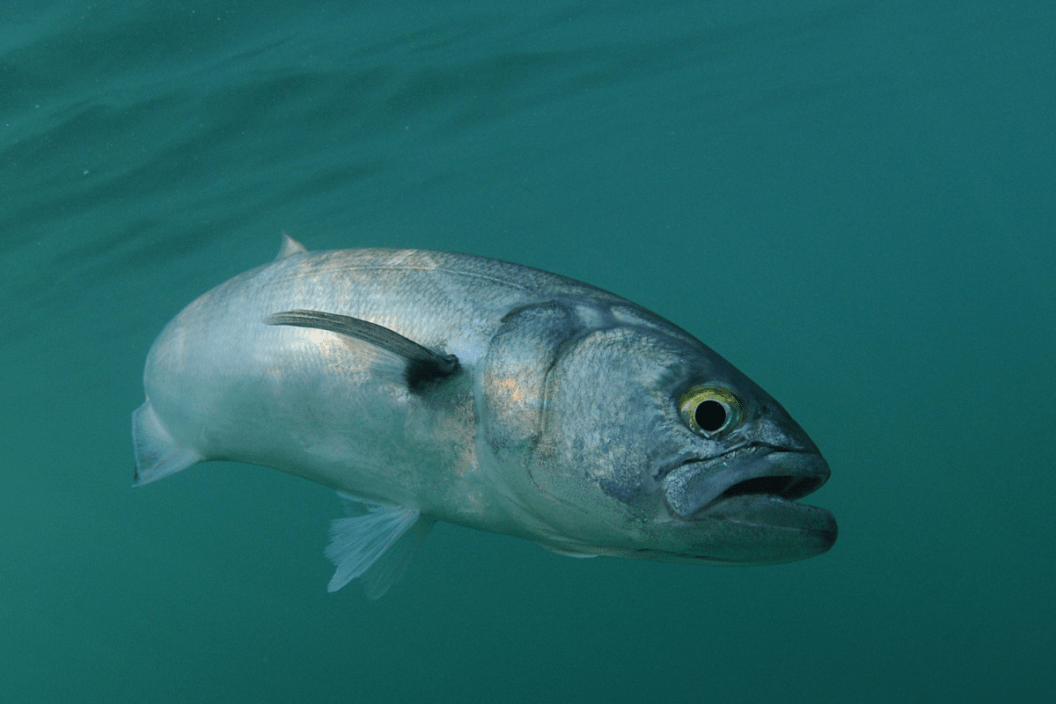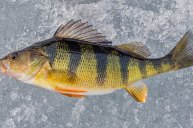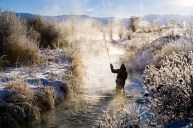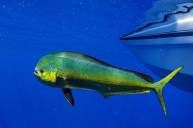We target lots of saltwater gamefish species, but when it comes down to the bluefish, we can get excited just thinking about it. These highly migratory fish are known to hunt in packs and cause saltwater anglers to hang onto their gear for dear life.
Along the East Coast, from Maine to eastern Florida, schools of bluefish can suddenly appear and cause a 'washing machine' like disturbance on the water that is known in some circles as the "bluefish blitz." While there is a commercial fishery for the bluefish, they are managed state by state to make them a more significant part of the catch that is allocated to the recreational fishermen.
For those saltwater anglers who have found themselves in the middle of a feeding school of bluefish (whose teeth are the stuff of legend), the sight and feel of a strike on the correct tackle have turned them into true bluefish busters. For the rest, learning everything possible about this great sportfish will have you lining up a charter and setting your sights for bluefish.
Bluefish Distribution & Life Cycle
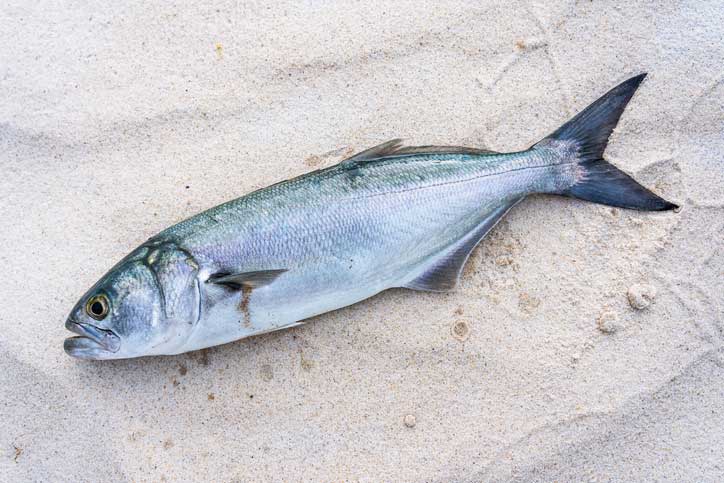
Sergey-AND-Marina/Getty
Bluefish are found widely distributed worldwide in tropical and subtropical waters, but are especially abundant along the U.S. East Coast south to Florida. In winter, bluefish will migrate south along the coast and stay there until reversing their migration north in the spring, reaching the New England states by June.
Come summer, when the best fishing occurs between July and August, you can find bluefish in the waters from New York to Cape Hatteras, North Carolina. It's not uncommon that they will enter estuaries and even into brackish waters to feed and spawn, which they do multiple times a year. They sometimes follow the continental shelf and are seen in the surf near well-known beaches. By October, they will leave the northernmost waters and begin their migration south.
Bluefish grow fast and can reach as much as 30 pounds by adulthood. They are known to live to the ripe old age of 12 and can reproduce at the tender age of only two, laying as many as 400,000 to two million eggs which can hatch soon after laying. These eggs will float on the currents and are vulnerable to being eaten by seabirds and other fish.
Bluefish spawn multiple times in spring and summer, giving them the best chance to carry on their life cycle as an open ocean fish species. Even at that, the voracious bluefish can be the target of certain predator species such as mako sharks, bluefin tuna, striped bass, and even bigger, adult bluefish.
How to Identify Bluefish
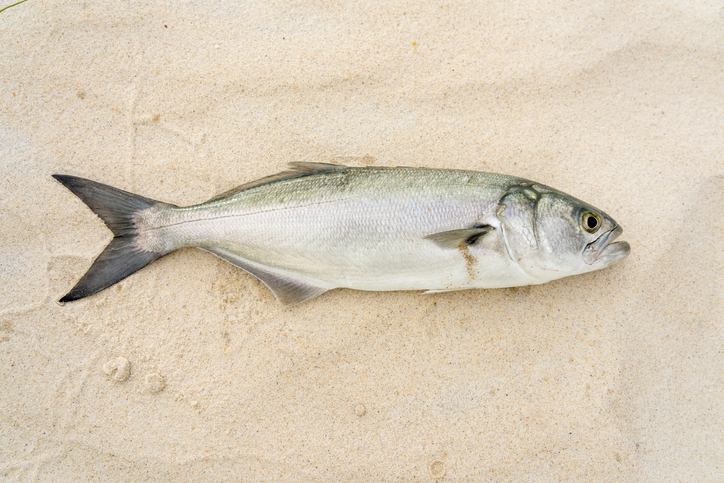
Sergey-AND-Marina/Getty
Bluefish have a sleek profile built for speed and marine predation. They are blue-green on the back and have a silvery sheen on their sides and belly, along with a prominently forked tail. They have two dorsal fins, the first being the spiny one and the second the larger one, which extends almost all the way toward its tail.
Bluefish come fully equipped with razor-sharp teeth and shearing jaws to demolish their prey (menhaden and squid, mainly) with a single row of knife-edged teeth on each side. When bluefish are feeding, they eat their prey by voraciously attacking and eating anything they can catch in their mouths.
Locating Bluefish
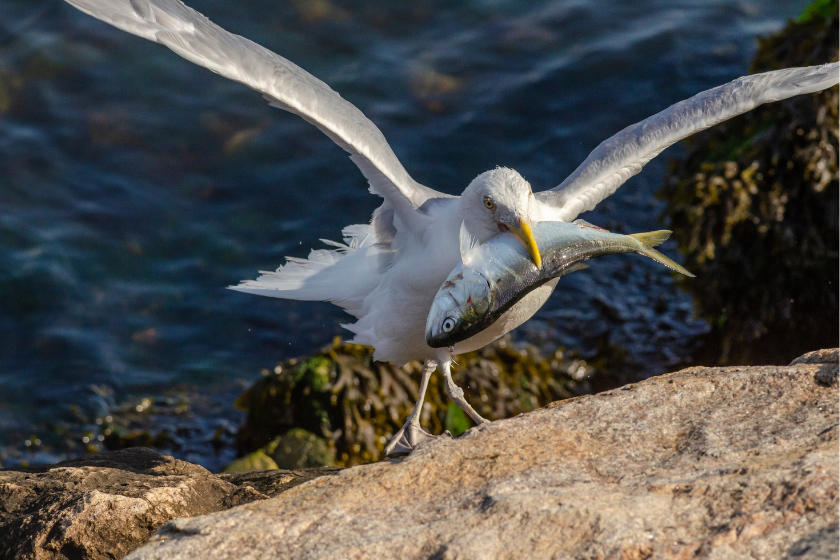
danlogan via Getty Images
While these fish are subject to water temperatures up and down the East Coast, maybe the number one way to find a school is by watching where the seabirds are feeding. After that, structures like rifts and rock ledges cause current breaks and gather baitfish, and big blues will often gather and feed on them.
Snapper blues, which I call the bluefish that are only around a pound or less, are found more often in the shallower waters, while larger adults stay in more profoundly open waters chasing forage such as menhaden. Bluefish are known to skirt all the rules and show up in great numbers on shallow flats, especially in the spring.
When adult bluefish gather in the shallows, they tend to be in a spawning pattern and can be pretty skittish, but enterprising anglers that are ready to pole their skiffs around lightly and patiently will ideally sneak up on marauding fish that are still in a feeding pattern.
Bluefish are found in the bays, passes, inlets, and in the inshore waters around coastal areas. Everywhere from rock jetties and piers to grass flats and the surf can hold bluefish, but for a real giant, you'll need to explore the deeper waters with a guide or someone who has experience fishing for these prime-time predators.
Please check out my book "The Hunter's Way" from HarperCollins. Be sure to follow my webpage or on Facebook and YouTube.
